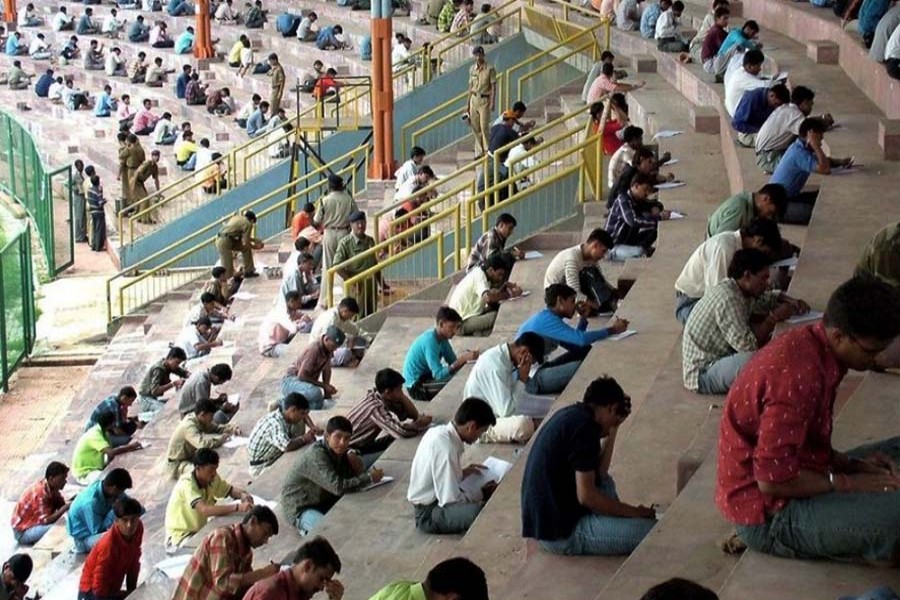Indian unemployment rate rose to its highest level in at least 45 years in 2017/18, an official survey that has been withheld by the government shows.
The Business Standard newspaper reported the jobless rate on Thursday, delivering a blow to Indian Prime Minister Narendra Modi months before a general election.
A political controversy over the survey erupted after the acting chairman and another member of the body that reviewed the jobs data resigned, saying there had been a delay in its scheduled December release and alleging interference by other state agencies, reports Reuters.
The assessment by the National Sample Survey Office (NSSO), conducted July 2017-June 2018, showed an unemployment rate of 6.1 per cent.
That was the highest since 1972/73, the period for which the data are comparable, the newspaper reported, citing documents it had reviewed. It did not give a figure for 1972/73.
But the government think-tank NITI Aayog said the report was only a draft and that a final version would be published in March.
It denied unemployment was widespread in India, whose economy is one of the fastest growing in the world.
“You can’t be growing annually at 7.2 per cent and saying that there are no jobs being created in the economy,” NITI Aayog Chief Executive Amitabh Kant said at a press conference.
“To my mind, the problem is that there’s a lack of good-quality jobs, and that’s what we need to focus on. There’s a wages problem, and there’s a very big informal sector in India’s economy.”
He said the country was creating more than 7 million jobs a year, enough for “new entrants” joining the workforce.
Rahul Gandhi, the leader of the Congress party, the main opposition, said the report showed “a national disaster”.
Though India’s economy has been expanding by 7.0 per cent plus annually, uneven growth has meant that new jobs are not keeping pace. And critics say the government’s claims of economic success have sounded increasingly hollow.
Modi’s ambitious Make-in-India project has failed to take off. It was intended to increase the share of domestic manufacturing from 17 per cent of gross domestic product to about 25 per cent and create jobs for an estimated 1.2 million youth entering the market each month.
Instead, the report showed 18.7 per cent of urban males aged 15-29 were without work, and the jobless rate for urban females the same age was 27.2 per cent.
Worse, the labour force participation rate - the proportion of population working or seeking jobs - declined to 36.9 per cent in 2017/18 from 39.5 per cent in 2011/12, the report said. The comparable rate for the United States was 63.1 per cent in December.
The NITI Aayog said the government needed more quarterly data to publish a “comparable” jobs report.
But P.C. Mohanan, who on Monday resigned as the head of the government-funded National Statistical Commission, said the standalone report for the last fiscal year should have been published.
“There’s no link between this and the quarterly data,” Mohanan told Reuters. “This report was released for approval because this is a standalone report and it does not require any additional verification with any sources.”
Himanshu, an associate professor at New Delhi’s Jawaharlal Nehru University who specialises in development economics, said that the jobs crisis was everywhere to see.
“News and data like thousands of PhDs applying for waiter jobs in Mumbai or millions applying for just a thousand jobs in Gujarat or 10 million applying for a small number of jobs in railways,” he said.
“I mean, these kind of examples are everywhere,” he said, pointing to street protests by caste and other interest groups seeking quotas for government jobs.
The data provides the first comprehensive assessment of India’s employment since Modi’s decision in November 2016 to withdraw most of the country’s banknotes from circulation overnight.
After the chaotic launch of a national sales tax in July 2017, hundreds of thousands have lost jobs in small businesses.
The gloomy jobs data could be awkward for Modi’s Hindu nationalist government to explain with a general election looming and opinion polls already showing the ruling Bharatiya Janata Party unlikely to keep its parliamentary majority.
“It’s a very, very serious issue, and that is the why the government didn’t want this data to come out in the public domain,” said former Finance Minister Yashwant Sinha.
A report released by the All India Manufacturers’ Organisation said last month 3.5 million jobs had been lost since 2016, mainly due to demonetisation and rising working costs after the launch of the national tax.


